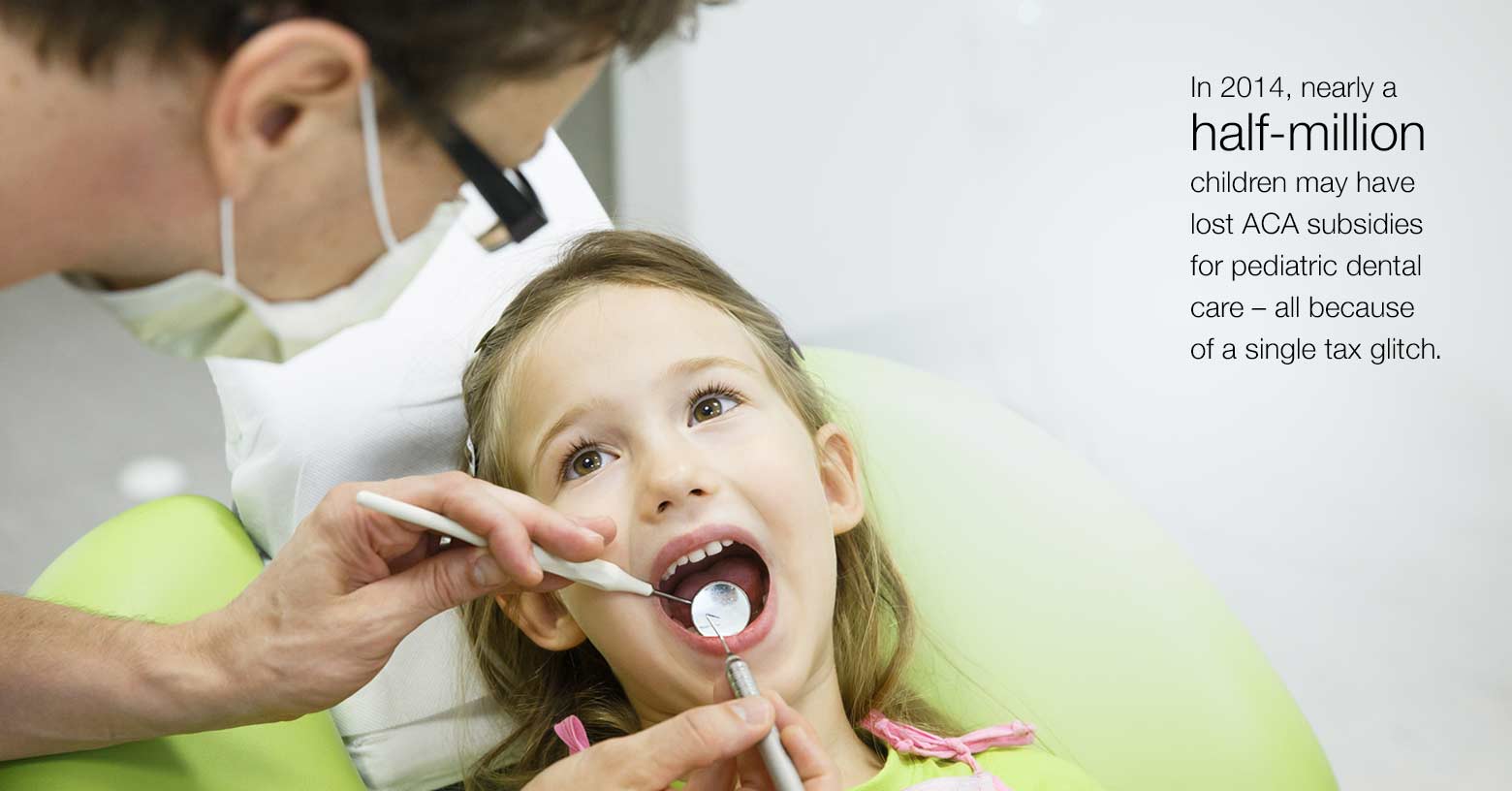
A "Catch 22" interpretation of the tax code that placed pediatric dental insurance out of the reach of many families would be done away with under a rules change proposed earlier this month by the Treasury Department.
This change makes perfect sense. Pediatric dental coverage is one of the 10 essential benefits required to be covered under the Affordable Care Act (ACA). But because of a problem with the original rules guiding how premium tax credits are calculated, in many cases, the cost of the pediatric dental benefit is excluded from the amount of financial assistance that families get to make coverage more affordable. That means that too many children are going without the critical coverage they need – and are entitled – because their families cannot afford to buy it.
Families USA joined with more than 40 other state and national health care organizations and child advocacy groups in urging the Treasury Secretary Jack Lew to make this common sense revision. In a 2013 letter to Lew, we laid out our case:
Oral health is critical to children's overall wellbeing. Congress recognized as much when it included oral care for children as one of the essential health benefits specified in the ACA. Congress also intended that the purchase of the entire essential health benefits package be supported with premium tax credits.
Here's what's been happening and why change was needed:
The IRS calculates the premium tax credit (PTC) based on the second-lowest cost silver plan in a specific area. And when that plan includes pediatric dental, as is required in some states, that price figures into the overall PTC calculation.
The glitch that needed fixing
So far, so good. But there are two problems.
First, most traditional health insurance plans do not include pediatric dental services. And the federal government and most states do not require insurers to offer pediatric dental coverage as part of their Silver plans if stand-alone dental plans are available in the marketplace. And therein lies the catch. If a family's only option is to purchase the stand-alone dental plan, the IRS does not count that purchase towards the PTC calculation – just the cost of the Silver plan.
But second, the government has been assessing which Silver plan is the second lowest-cost without regard to whether any of the plans include pediatric dental benefits. That means that even when there is a traditional health insurance plan that includes pediatric dental services, it may still be too expensive for families to buy: For many families buying health insurance through the marketplace, a few dollars can mean the difference between having coverage and not having it.
Only about one-third of marketplace health plans include pediatric dental benefits, and in some marketplaces pediatric dental coverage is only available through stand-alone dental plans, according to the Children's Dental Health Project.
Help for millions who lost subsidies due to glitch
Either way, ensuring that the cost of pediatric dental benefits is included in the premium tax credit calculation for families will go a long way towards helping more children get access to the care they need.
The National Association of Dental Plans (NADP) estimated in 2014 that 366,616 low-income children under the age of 18 and their families lost subsidies worth $93.6 million in the then 33 federally facilitated marketplace states because of this glitch in the tax code. If the same assumptions are applied to the 130,906 children who obtained coverage through State Based Marketplaces, an additional $28.5 million in subsidies were also lost, according to the NADP.
This disconnect between public policy and the tax code never made any sense. All of us who know how critically important dental care is for a child's total health applaud Secretary Lew for making this crucial change. Left untreated, a child's dental disease can lead to a lifetime of serious medical problems. And in rare cases – even death.
Reminder of pressing need for dental coverage
But this tax code repair also serves as a reminder about the larger debate we need to have about how dental care fits in to nation's overall health care agenda. Right now about almost 68 million Americans under age 65 years do not have dental insurance, according to the NADP. This is roughly twice the number of medically uninsured in the same age group. And another approximately 46 million seniors are uninsured, because, contrary to popular belief, dental care is not included in Medicare.
Getting pediatric coverage to our nation's children is an important first step. But next we need to explore ways to make quality dental coverage affordable for adults as well.
Rachel Klein is Director of Organizational Strategy, Oral Health Campaign for Families USA.


